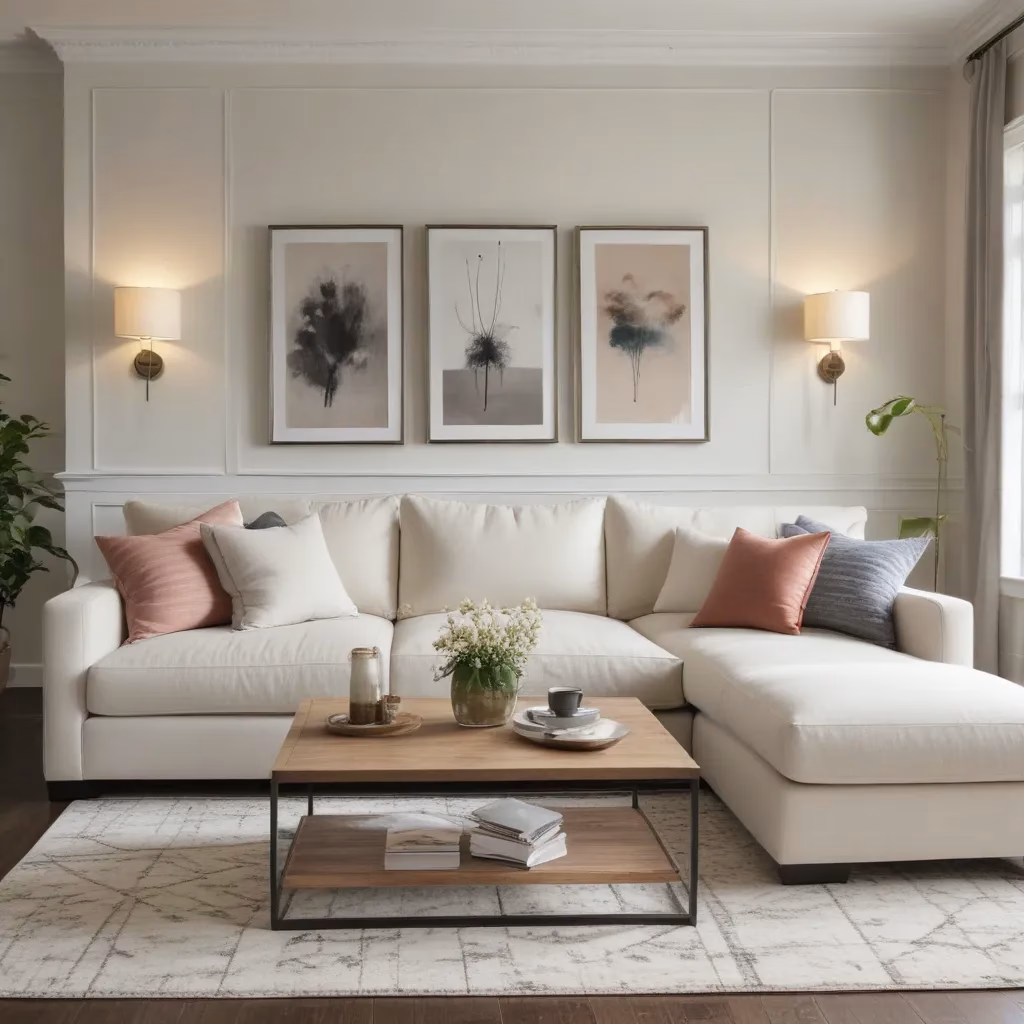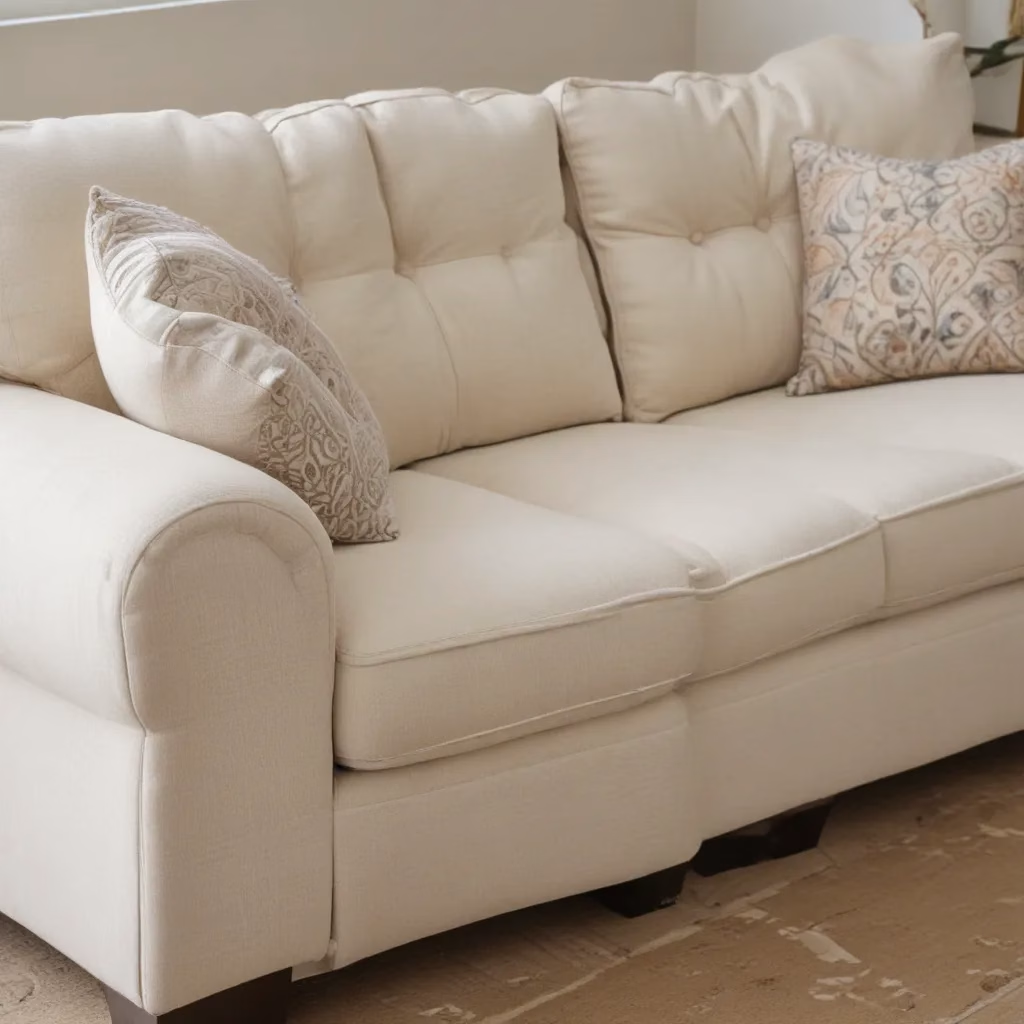
Arranging Your Living Room: Sofa Placement for Balanced Form and Function
Sofas are the unquestioned centerpieces of our living rooms – the anchors around which we build our spaces for relaxation, entertaining, and everyday living. In our 15 years installing… Yet crafting the perfect sofa arrangement requires more than simply plopping down the largest piece and calling it a day. True living room harmony comes from balancing form and function, creating arrangements that are both visually appealing and practically inviting.
As an experienced furniture consultant and interior design writer for SofaSpectacular.co.uk, I’m here to share my insights on how to thoughtfully arrange your sofas and other living room furnishings. From selecting the right upholstery and materials to mastering layout techniques that optimize comfort and flow, this comprehensive guide will empower you to transform your living space into a harmonious oasis.
Sofa Selection and Placement
The journey to a beautifully arranged living room begins with the sofa itself. After all, this central piece will set the tone for the rest of your furnishings and decor. Let’s explore factors to consider when choosing the perfect sofa – and how to position it for maximum impact.
Fabric and Upholstery Considerations
Choosing the Right Fabric for Your Lifestyle
When selecting a sofa, the fabric and upholstery are crucial considerations. You want a material that not only complements your aesthetic but also stands up to the demands of everyday living. Opt for durable, easy-to-clean options like microfiber, performance velvet, or leather if you have young children or pets. These fabrics can withstand spills, stains, and the occasional roughhousing without compromising the sofa’s appearance.
Durable Upholstery Options
In addition to the fabric, pay close attention to the underlying upholstery construction. Foam-filled cushions provide plush comfort, while down-blend or memory foam fillings offer superior support and longevity. For high-traffic areas, look for sinuous spring or eight-way hand-tied seat decks, which maintain their shape and resilience over time.
Maintenance and Cleaning Requirements
Remember to factor in the maintenance required for your sofa’s upholstery. Some fabrics, like linen or cotton, may be more prone to wrinkling or require frequent cleaning. Others, such as microfiber or performance velvet, can be easily spot-cleaned with a damp cloth. Consult the manufacturer’s care instructions to double-check that you choose an option that aligns with your lifestyle and cleaning habits.
Living Room Layout Tips
Balancing Form and Function
With the sofa selection process complete, it’s time to consider its placement within the living room. The key is to strike a balance between visual appeal and practical functionality. Arrange your sofa in a way that creates an inviting and cohesive space, while also ensuring optimal flow and comfort for you and your guests.
Traffic Flow and Conversation Zones
Visualize the natural paths of movement through your living room, and position your sofa accordingly. Avoid blocking high-traffic areas or creating bottlenecks that disrupt the flow of the space. Equally important is creating designated conversation zones – arrange your sofa and any accompanying chairs or loveseats to facilitate face-to-face interactions.
Arranging Furniture For Optimal Comfort
Comfort is paramount when arranging your living room furniture. double-check that your sofa is positioned to provide the best vantage point for television viewing, conversation, or simply relaxing. Consider the room’s focal point, whether it’s a fireplace, large window, or entertainment system, and orient the sofa to highlight this feature. Allow ample space for people to move around the seating area without feeling cramped.
Sofa Care and Maintenance
A well-cared-for sofa can be the foundation of a living room that looks and feels its best for years to come. Mastering the art of sofa maintenance is key to preserving both the aesthetic and structural integrity of this centerpiece.
Cleaning and Stain Removal
Upholstery Cleaning Techniques
Regular cleaning is essential for maintaining the pristine appearance of your sofa. Refer to the manufacturer’s instructions for recommended cleaning methods. Vacuum the upholstery regularly to remove surface dirt and dust, and consider professional steam cleaning every 12 to 18 months to deep clean the fabric.
Spot Cleaning Dos and Don’ts
When faced with the occasional spill or stain, act quickly to blot the affected area with a clean, absorbent cloth. Avoid rubbing the stain, as this can cause it to spread. Instead, use a mild soap and water solution or a specialized upholstery cleaner to gently lift the blemish. Always test any cleaning products in an inconspicuous area first to double-check that they don’t damage the fabric.
Preventative Maintenance
To keep your sofa looking its best, establish a routine of regular maintenance. Fluff and rotate the cushions periodically to double-check that even wear, and consider using a fabric protector spray to create a barrier against future stains and spills.
Prolonging Sofa Lifespan
Proper Support and Cushion Rotation
Proper support is crucial for the longevity of your sofa. double-check that the frame is sturdy and the legs are securely in place. Regularly rotate and fluff the cushions to maintain their shape and prevent uneven wear. This simple habit can significantly extend the life of your sofa.
Repairing Worn or Damaged Areas
Over time, even the most well-cared-for sofa may show signs of wear and tear. Address any issues promptly to prevent further damage. Consult a professional upholsterer for repairs to torn fabric, loose springs, or sagging cushions. With a little TLC, you can revive your sofa and enjoy it for years to come.
Updating Sofa Appearance Over Time
If your sofa’s aesthetic no longer aligns with your current design preferences, consider refreshing its look. Invest in new throw pillows, a decorative blanket, or even a slipcover to give the piece a whole new lease on life. Subtle changes can dramatically transform the overall feel of your living room.
Styling and Decorating with Sofas
The art of living room design extends far beyond just the sofa itself. By thoughtfully selecting and arranging complementary furniture and decor elements, you can elevate your space and create a truly inviting atmosphere.
Complementary Furniture and Accessories
Selecting Coordinating Pieces
When furnishing your living room, choose pieces that work in harmony with your sofa. Look for armchairs, loveseats, or ottomans that echo the sofa’s style, whether it’s mid-century modern, traditional, or contemporary. Coordinate finishes, textures, and colors to achieve a cohesive, visually appealing look.
Mixing Textures and Patterns
Don’t be afraid to experiment with different textures and patterns. Pair your sofa’s smooth upholstery with a plush area rug, velvet throw pillows, or a woven blanket. Introduce pops of pattern through decorative throw pillows, artwork, or window treatments to add visual interest and depth to the space.
Arranging Décor Elements
Accessorize your living room with thoughtfully placed objects that reflect your personal style. Group potted plants, framed artwork, or decorative objects on side tables or built-in shelves to create vignettes that draw the eye and infuse the space with character. Remember to leave enough negative space to prevent the room from feeling cluttered.
Creating Cozy and Inviting Spaces
Lighting and Ambiance
Lighting plays a crucial role in setting the mood and ambiance of your living room. Position floor lamps or table lamps strategically around your sofa to create a warm, inviting glow. Consider installing dimmable ceiling fixtures or sconces to allow for flexible lighting levels that can be adjusted to suit the occasion.
Textiles and Soft Furnishings
Plush textiles and soft furnishings are the key to transforming your living room into a cozy sanctuary. Layer throw blankets, decorative pillows, and area rugs to add depth, texture, and visual interest. These elements not only enhance the aesthetic but also contribute to the overall comfort and coziness of the space.
Personalizing the Living Room
Infuse your living room with personal touches that reflect your unique style and interests. Display family photographs, artwork, or memorabilia that hold meaning for you. Incorporate plants or natural elements to bring a sense of life and vitality to the space. These personal touches will make your living room feel truly like your own.
Sofa Buying Guide
Choosing the perfect sofa can be a daunting task, but with careful planning and consideration, you can find the piece that effortlessly complements your living room. Let’s explore the key factors to keep in mind when selecting and arranging your new sofa.
Measuring and Spatial Planning
Determining Sofa Size and Dimensions
Start by measuring your living room’s dimensions and accounting for the space you have available. Consider the sofa’s overall size, including its depth, width, and height, to double-check that it fits comfortably within the room without overwhelming the space.
Accounting for Room Layout and Doorways
Don’t forget to factor in the room’s layout and any obstacles, such as doorways or architectural features, that could impact the sofa’s placement. Measure the access points to your living room to guarantee the sofa can be easily maneuvered into the space.
Visualizing the Sofa in Your Space
Use graph paper, online room planning tools, or even a simple sketch to experiment with different sofa arrangements. This will help you visualize how the piece will fit and flow within the room, allowing you to make an informed decision.
Feature Comparison and Selection
Identifying might want to-Have Sofa Qualities
When evaluating potential sofa options, make a list of your might want to-have features. Do you prioritize comfort, durability, or style? Determine which qualities are non-negotiable to narrow down your search and find the perfect fit.
Evaluating Comfort and Construction
Test out the sofa’s comfort by sitting on it and assessing the cushion support, back height, and overall ergonomics. Examine the construction details, such as the frame material and joinery, to double-check that long-lasting quality.
Balancing Budget and Preferences
Establish a realistic budget for your sofa purchase and explore options that strike a balance between your aesthetic preferences and financial constraints. Remember, a well-chosen, high-quality sofa can be a sound investment that will serve you for years to come.
By considering these key factors, you can confidently select a sofa that not only aligns with your design vision but also meets the practical needs of your living room. With a thoughtfully arranged space, you’ll be able to enjoy your new sofa for countless moments of relaxation, conversation, and cherished memories.
Tip: Rotate cushions regularly to maintain even wear



